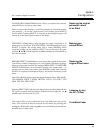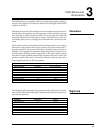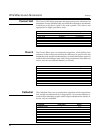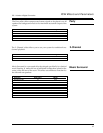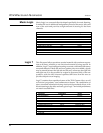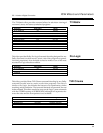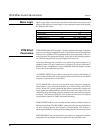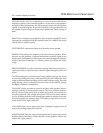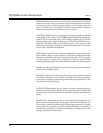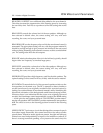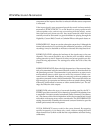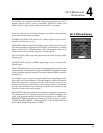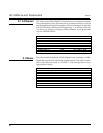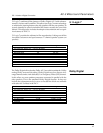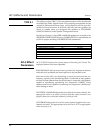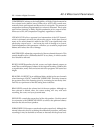
42
Lexicon
PCM Effects and Parameters
LIVENESS adjusts the amount of recirculation within the effect. Higher
values mimic more reflective surfaces in the simulated space and increase
the amount of time it takes the sound to decay. At very high values, the
decay is audibly less smooth than in the Church and Cathedral Effects,
which are more effective at simulating very live spaces.
LOW FREQ WIDTH allows you to apply low-frequency spatial correction
to the signal. Positive values of LOW FREQ Width indicate that the difference
signal (L-R) has additional energy below 500Hz, while the sum (L+R) has
correspondingly less. Negative settings of LOW FREQ WIDTH can com-
pensate for recordings with too much of this property. This control can add
needed spaciousness and warmth to classical recordings made with coinci-
dent or near-coincident microphones.
MAIN LEVEL controls the level of the mono signal that is reproduced by the
main speakers. When a center speaker is part of the configuration many
films may sound better when this control is set between 6-12. This spreads
the film sound out around the screen and can be more pleasant than
restricting the dialog and much of the other film sound to the center speaker.
MID RT (midrange reverberation time) is the time required for midrange
sounds to decay 60dB in level.
PRE-DELAY increases the delay between the direct sound and the onset of
reverberation. Because some pre-delay is inherent in the program material,
a value of 0 is usually a good starting point. Increasing the pre-delay value
will make the hall sound larger.
RE-EQUALIZER equalizes the left, center, and right channel outputs to
match the overall frequency balance of the original recording. Without this
re-equalization, many films and some television programs will sound too
bright.
REAR DELAY adjusts the amount of time between the appearance of a
signal in the front channels and its emergence from the rear. Generally, the
correct delay is about 16 milliseconds, but the setting depends on speaker
set-up and source material. In general, the delay should be low enough so
that the rear sound does not become identifiable as a distinct source. The
settings also affect the side outputs.



